If you found your way here because your beloved dog was recently diagnosed with intervertebral disc disease (IVDD) you are not alone! Late last year my senior papillon, Kitsune, was diagnosed with cervical IVDD. It was certainly a stressful time for our little pack. It was really hard watching Kit deal with being in pain. He required more care than usual, which was exhausting. The vet bills were piling up. Thankfully, all that stress was worth it! A few months short of a full year since his original diagnosis, Kit is doing amazingly well!
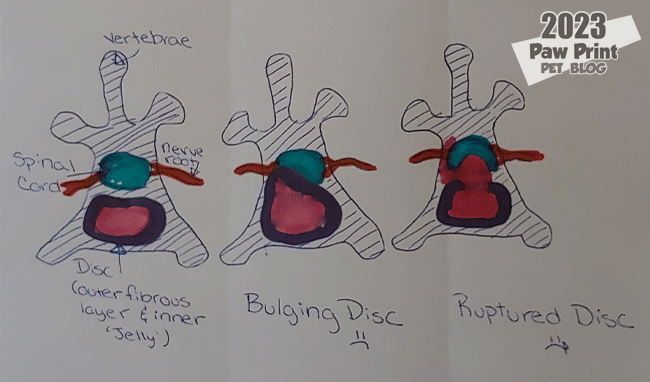
Post Contents:
- 1 If you are new to IVDD you might want to check out some of our previous posts:
- 2 Can IVDD in Dogs be Treated?
- 3 Surgery is Still an Option
- 4 Conservative IVDD Treatment (Treating IVDD without Surgery)
- 5 How to Decide Between Conservative IVDD Treatment and Surgery
- 6 What Worked for My Dog
- 7 More Info to Come
If you are new to IVDD you might want to check out some of our previous posts:
Because I already covered a lot of the basics, such as what IVDD is, signs your dog has it, and how IVDD is diagnosed in dogs, today I wanted to focus on the aspect of IVDD that most owners probably want to know about most – How is IVDD in dogs treated?
Can IVDD in Dogs be Treated?
In the, in this case not so good, ol’ days, IVDD was commonly a death sentence for dogs. A dog would present to the vet often times in a lot of pain, with some degree of paralysis. Veterinary technology was not as advanced as it is today. Despite vet costs being cheaper in the past, spinal surgery to repair the damage done by ruptured discs has always been expensive. Owners who couldn’t afford expensive diagnostics and surgeries were often counseled to humanly euthanize their pets, to spare them from the pain and paralysis that can come with IVDD. Thankfully, for IVDD dogs and the families who love them, we have more options today.
Surgery is Still an Option
For some dogs diagnosed with IVDD, and owners who can afford it, surgery is still the best IVDD treatment option. Dogs with severe or progressive IVDD, or IVDD that does not respond to less invasive treatment options, may be good surgical candidates. Depending on your dog’s unique situation, your vet may recommend one, or a combination, of the following types of surgeries.
- Laminectomy: A laminectomy involves your dog’s surgeon removing part, or all, of impacted vertebral bones in order to relieve pressure on the spinal cord and/or surrounding nerves.
- Hemilaminectomy: This type of spinal surgery is less invasive, and involves removing only a piece of the impacted vertebra. During a hemilaminectomy, more of the vertebra is preserved.
- Ventral Slot: Ventral slot surgeries are preformed on dogs suffering from cervical (neck) IVDD. Holes are drilled into the impacted vertebra so that offending disc material can be removed.
- Fenestration: This surgery is often preformed in conjunction with a laminectomy or hemilaminectomy. Disc material from discs surrounding the ruptured disc or in areas of compression are removed to prevent them from rupturing in the future.
Whatever type of surgery your vet recommends, the goal is to decompress the spine and surrounding nerves as quickly as possible. IVDD surgery has a higher success rate if it’s preformed soon after the initial onset of IVDD symptoms. 24 hours after the initial onset of symptoms, surgery success rates begin to decrease. Success rate is also higher (90%) in dogs who do not lose full mobility. In dogs who present with stage 5 IVDD (full paralysis with no deep pain sensation) the success rate of immediate surgery is thought to be between 50% to 60%. Surgery success is measured by the dog recovering to be pain free and mobile. Dogs with “failed” surgeries may not regain full function of their (usually rear) legs but should still be able to recover and live pain free.
Conservative IVDD Treatment (Treating IVDD without Surgery)
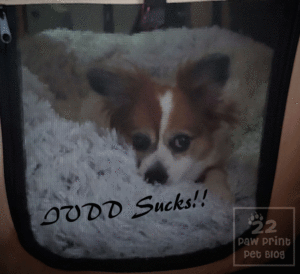 Treating IVDD without surgery is called conservative IVDD treatment. For many reasons, this is the route most IVDD dog guardians opt to take. Conservative treatment for IVDD is less invasive, and much less expensive. It, basically, involves using medications to keep your dog relaxed and pain free, and forcing them to rest for the duration of time it takes for their bodies to heal the bulging or ruptured disc(s) on their own.
Treating IVDD without surgery is called conservative IVDD treatment. For many reasons, this is the route most IVDD dog guardians opt to take. Conservative treatment for IVDD is less invasive, and much less expensive. It, basically, involves using medications to keep your dog relaxed and pain free, and forcing them to rest for the duration of time it takes for their bodies to heal the bulging or ruptured disc(s) on their own.
Conservative IVDD treatment usually involves the use of medications such as pain medications, anti-inflammatories, muscle relaxers, and sometimes sedatives. The most important aspect of conservative IVDD treatment, however, is rest. Most vets will recommend very strict crate rest for at least 8 weeks. If dogs are allowed to resume normal activities before their damaged disc has enough time to fully heal they risk rupturing the disc again.
Dogs going through the initial 8 weeks of conservative IVDD treatment should especially not be allowed to jump on or off any surfaces. “Walks” should be limited to very quick bathroom breaks only.
Think about what happens when your dog breaks a bone. A cast is used to keep the healing bone stable. If the bone was able to constantly move around, out of place, it wouldn’t be able to heal correctly. A dog’s spine is a very mobile area. Every time your dog walks, moves around, jumps, there is some amount of movement of the spine. Normally this is not a problem, as the vertebra and spine are designed to move with your dog. However, when you are trying to heal a spinal injury this constant movement can greatly delay natural healing. Unfortunately there is really no way to fully immobilize a dog’s spine. What we can do, however, is to limit movement of the spine as much as possible. This is why very strict rest is so important when treating IVDD conservatively.
How to Decide Between Conservative IVDD Treatment and Surgery
There are a lot of different factors that will go into determining what course of treatment is right for your dog. Here are some of them.
- Finances: This one is unfortunate, but the fact of the matter is that IVDD surgery, and the diagnostics that will be required prior to surgery, are very expensive. It’s not unusual for IVDD pre-surgery diagnostics (MRIs, and/or CT scans) and the surgery itself to, combined, top out at $10,000 or more. Not all, or even most, pet owners can afford that. If you are reading this and your dog hasn’t yet been diagnosed with IVDD but you are concerned about it occurring in their future, consider looking into pet insurance now before your furry friend develops pre-existing conditions.
- Pain Control: If you try treating your dog with conservative methods but cannot get his/her pain managed, surgery may be your dog’s best option. Keep in mind, though, that finding the “perfect” pain control for your dog may take a bit of trial and error. It did for my dog. For the first couple of days after his IVDD diagnosis his vet had to adjust his frequency of pain medication. Your vet may also experiment with your dog’s dosage, and type of medication.
- Returning Pain: If, after a period of time, you cannot wean your dog off of pain medications and anti-inflammatories with their pain returning, surgery may be the best option.
- Progression of Symptoms: Surgery is usually recommended if dogs who are treated conservatively continue to experience a progression of symptoms. For example, if they experience worsening neurological functions, progressive loss of mobility, or loss of bladder control.
- Frequent Reinjury: Vets may recommend surgery for dogs who experience IVDD episodes multiple times in the same disc.
- General Health of the Dog: Dogs with other health issues, advanced age, etc., will probably not be the best surgical candidates. For dogs who are at risk when put under anesthesia, or are otherwise not healthy enough to undergo a major surgery, conservative treatment would be best.
- Level of Impairment: Dogs with mild cases of IVDD, who do not experience paralysis and loss of deep pain sensation, are typically more likely to make a full recovery with conservative treatment alone. In these dogs, it makes sense to try conservative treatment before opting for much more invasive surgery.
What Worked for My Dog
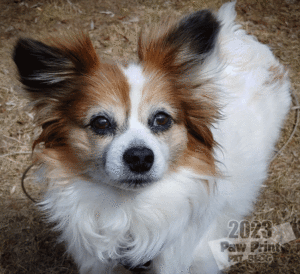 We opted to go the conservative treatment route for my dog, Kitsune’s, cervical IVDD. Between keeping Kit medicated around the clock, and having to force him to rest, we had a rough couple of weeks. But it was well worth it! Before his 8 weeks of mandated rest were even up it was obvious that Kit was starting to feel much better. Almost a year out at the time of writing this (he’ll be a year out from his original diagnoses in Sept of 2023) you would never even know that anything was ever even wrong with Kit!
We opted to go the conservative treatment route for my dog, Kitsune’s, cervical IVDD. Between keeping Kit medicated around the clock, and having to force him to rest, we had a rough couple of weeks. But it was well worth it! Before his 8 weeks of mandated rest were even up it was obvious that Kit was starting to feel much better. Almost a year out at the time of writing this (he’ll be a year out from his original diagnoses in Sept of 2023) you would never even know that anything was ever even wrong with Kit!
No matter what treatment option you chose, I’m not going to lie, IVDD treatment and recovery is rough. It’s stressful, and sad, and, even if you opt for conservative treatment, not exactly cheap. But, as long as you can get your dog’s pain managed appropriately, it’s so very much worth it. I’d spend money at the vet, and 8 weeks babying Kit around the clock a million times over if I knew that the outcome was going to turn out as good as his conservative IVDD treatment did. Once he recovered, Kit was right back to being his happy, silly self.
Thankfully, almost a year later, so far we haven’t had to deal with another IVDD flare up (knock on wood). Many dogs, yes even those treated conservatively, are able to recover from IVDD and go on to live healthy, happy lives. Some IVDD dogs do end up with permanent neurological issues, but this is something they can oftentimes live with as long as they are no longer experiencing any pain.
More Info to Come
If you’re walking through the weeds of IVDD with your dog and wondering what comes next, stay tuned. I’m planning on posting other IVDD articles, including one that focus on IVDD rehab and everything that comes after treatment is complete.
For now comment below! What is your experience with IVDD? If you treated, or are treating, your dog for IVDD what are some of the factors you and your vet took into account when selecting what type of treatment to go with?
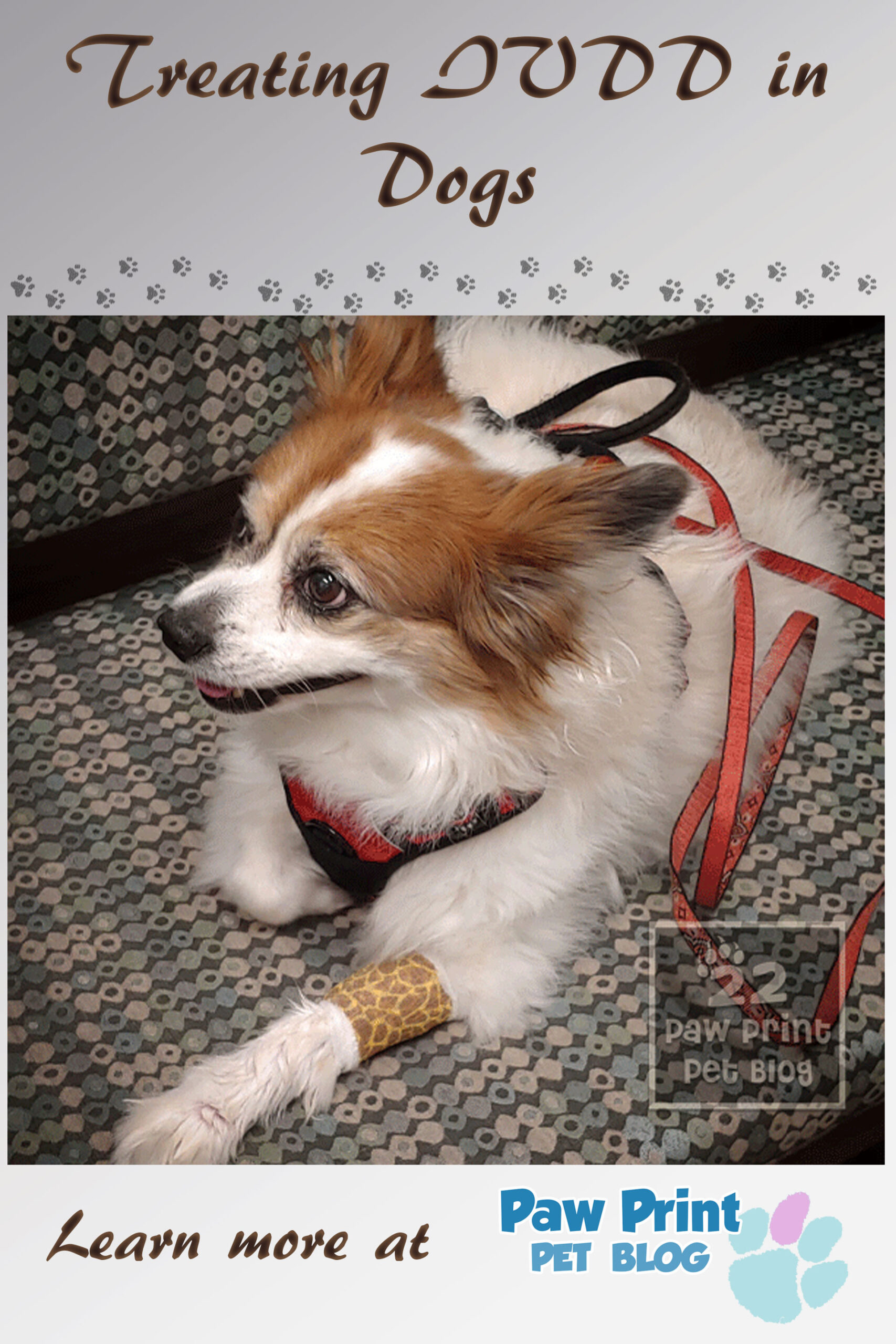
We’ve, unfortunately, been dealing with content scrapers stealing our articles lately. You shouldn’t be seeing this article on any site other than pawprintpetblog.com! If you’re reading this article on any other site, we’d love for you to take the time to contact us and let us know and, if you have the time, stop by and visit us on our official site! Thanks you.

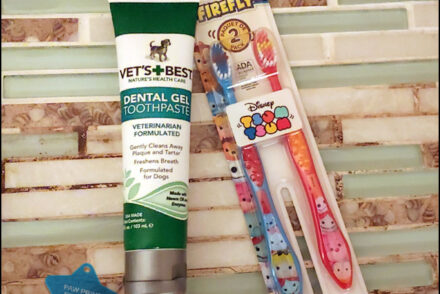
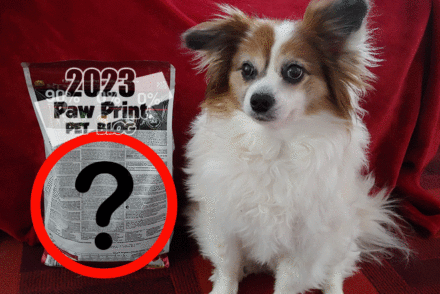

No Comments